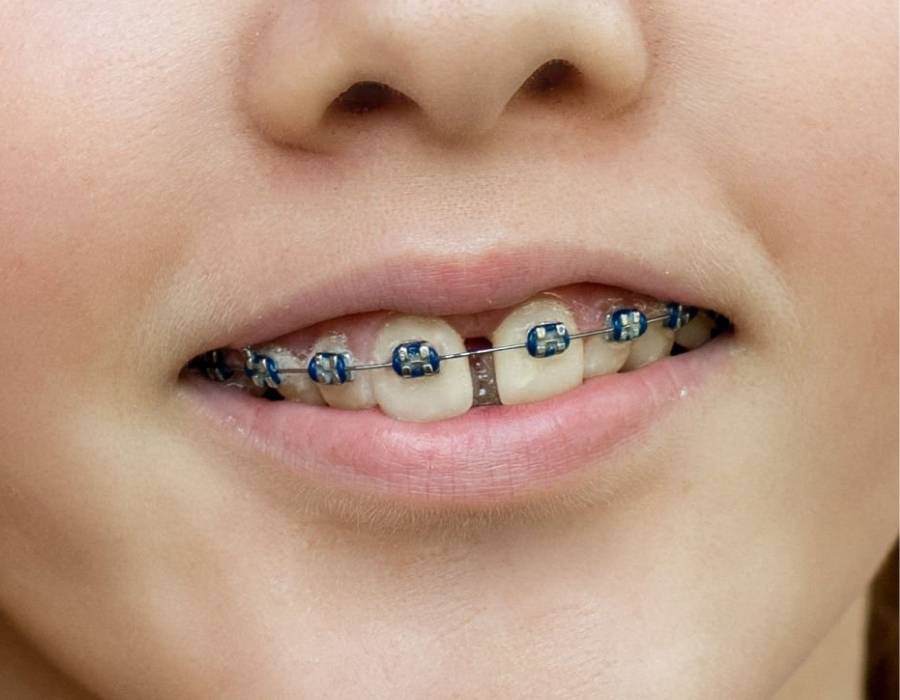A gap between your front teeth might feel like a minor aesthetic issue—but for many, it carries deeper concerns. Known medically as diastema, this condition affects individuals of all ages and often goes untreated due to misconceptions about its impact or available treatment options. However, braces remain one of the most proven, long-term solutions for correcting these gaps—both functionally and cosmetically.
If you’re wondering whether your gap teeth need attention or how braces can help, you’re not alone. This comprehensive guide dives into the reasons diastema happens, when it’s time to act, and how braces provide a lasting fix.
Why Diastema Happens: Causes Beyond the Surface
A diastema—commonly known as a gap between the teeth—can result from a range of causes, from genetics to daily habits. Understanding the root of the issue is the first step toward finding the right solution.
1. Jaw-to-Tooth Size Mismatch
When your teeth are proportionally smaller than your jawbone, extra space can appear between them. This imbalance is one of the most common reasons gaps form, especially between the front teeth.
2. Missing or Undersized Teeth
Sometimes, certain teeth—most often the lateral incisors—fail to develop properly or are naturally smaller than average. This lack of support allows neighboring teeth to shift, creating more visible spacing.
3. Oversized Labial Frenum
The labial frenum is the thin band of tissue that connects your upper lip to your gums. If it’s unusually large or thick, it can extend between the front teeth and prevent them from closing together, creating or maintaining a gap.
4. Thumb Sucking or Tongue Thrusting
These childhood habits might seem harmless, but repeated pressure from the thumb or tongue against the teeth can gradually force them apart—especially while the mouth is still developing.
5. Gum Disease or Bone Loss
Advanced periodontal disease doesn’t just affect your gums—it can damage the bone structure that holds your teeth in place. As this support weakens, teeth may shift or separate, creating gaps where none existed before.
Closing the Gap: How Braces Really Work for Diastema
Braces do more than enhance your smile—they function as a carefully engineered system designed to shift teeth into better alignment with precision and control. When it comes to diastema, braces are particularly effective in gradually closing the gap and improving both function and appearance.
The process begins with brackets and wires that apply consistent, gentle pressure to guide teeth toward their ideal positions over time. In some cases, orthodontists may use elastic bands or springs to create directional force, especially when addressing larger or more resistant gaps. If the spacing is caused by an oversized labial frenum, a simple procedure called a frenectomy may be performed before or during treatment to allow the teeth to move freely. Once the gap is closed, wearing a retainer is essential to keep the new alignment stable and prevent the space from reopening.
Types of Braces That Can Close a Gap
Metal Braces
Tried and true, metal braces are often the most effective option for correcting moderate to severe spacing. Their strength and durability allow for precise control over tooth movement, making them ideal for more complex diastema cases.
Ceramic Braces
Ceramic braces offer the same powerful results as metal braces but with a more discreet appearance. Made from tooth-colored materials, they’re a popular choice for patients who want effective treatment without the metallic look.
Clear Aligners (like Invisalign)
For those with mild to moderate spacing, clear aligners provide a nearly invisible solution. These custom trays gently shift teeth into place while offering the convenience of being removable for eating and cleaning—making them a favorite for adults and teens seeking a subtle approach.
When to Consider Braces for Diastema

Early detection can make a significant difference when it comes to treating diastema. The American Association of Orthodontists recommends that children have their first orthodontic evaluation by age 7. Identifying spacing issues at a young age allows for timely intervention, which can simplify treatment and potentially reduce the need for more complex procedures later on.
That said, orthodontic treatment isn’t just for kids. Braces are highly effective at any age, and adult treatment has become increasingly common—rising by nearly 40% over the past two decades in the U.S. If you’ve noticed your gap widening, difficulty biting or chewing, shifting teeth, or if you’re simply feeling self-conscious about your smile, it may be the right time to speak with an orthodontist. Addressing these concerns early can lead to a healthier bite and renewed confidence.
Redefine Your Smile, Reclaim Your Confidence
If your diastema is affecting your comfort, confidence, or quality of life, now is the perfect time to take action. Whether you’re a teen navigating social pressures or an adult ready to invest in a more polished, self-assured image, orthodontic treatment offers a trusted and lasting solution.
A gap in your smile doesn’t define who you are—but choosing to close it can transform how you feel, how you’re perceived, and how you care for your oral health. With today’s orthodontic options, taking that first step is easier—and more empowering—than ever.









